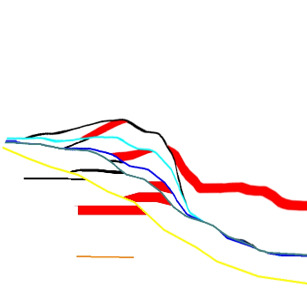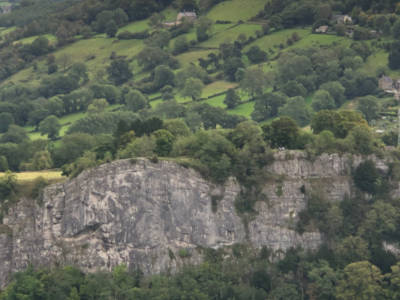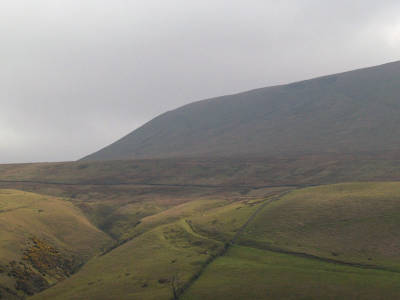CO2 storage onshore UK
February 2023
As matters presently stand, the likelihood of UK reaching carbon zero by 2030 is small. There is general agreement that the best way to dispose of CO2 produced by UK industrial activity is to bury it. Plans for the biggest producer “hubs” are being led by oil majors, with several multi-objective projects focussed on dumping in the Central and Southern North Sea, and Irish Sea, by pipelining to re-shaped platforms; and there is some interest (tiny by comparison) in burial in old oil fields onshore. Looking for long-term, purpose-designed modern facilities, the policy of going offshore will impose high cost for Industry end-users and may not be economic for most small-mid sized producers. Possible procedures and constraints for returning to abandoned, small onshore oil and gas fields are not yet defined. Hence we use the word “practical” here, meaning delivery of an acceptable solution which becomes available for all CO2 producers by 2030.
Here we argue the fastest, cheapest and by far the simplest plan for UK is to inject CO2 into the natural rock-fracture systems which cross the onshore Carboniferous basins, and locally culminate beneath the Upper Carboniferous shale cover. We are not aware that any other observer is recognising this route. There are dozens of locations suitable for small-scale operations aimed at users who just want to dump CO2, some are close to or even at the source site, others can service road tankers. Using seismic profiles we presently recognise numerous sites which could be made readily accessible for traffic, with only low environmental impact. The first step is to confirm some obvious candidates and trial-drill one, to demonstrate viable, interconnected fracturing and effective top sealing.
Key technical requirements are significant storage volume, high confidence in sealing, and demonstrable safety monitoring. These are addressed in the offshore by the location. Using old gas fields with numerous wells which will serve for CO2 plume observation, offers reasonable assurance that CO2 will be retained for 50-plus years; and if eventually it does start to escape from closure there are no local communities liable to lose their water supply, or to be confronted by significant gas escape near to housing. The downside is cost of new and lengthy pipelining from a collection point to one or more platforms; high maintenance and operating spend for limited work space; and the involvement in hydrogen production, factoring-up the project capital burn. Its for major CO2 sources. In the case of the onshore, rules are not yet defined and there is a danger that applying similar parameters for relatively small-scale operations will deter or prevent investment to achieve what is a straightforward, very much faster and much lower cost objective.
This site looks at reservoir and structure solutions: we have set out to show that fractured-system traps are promising. What we don’t have yet is the clarity needed from permitting and planning authorities, to attract capital investment. Until it is clear how the drilling of injectors will be authorised and monitored, even modest spend will not be possible onshore UK. If the legislation could appear in the next year or so, there would immediately be an insurance option in place against delay or even abandoning of the offshore projects, and the 2030 net zero deadline can be met.
When a first site shortlist is identified, additional detail seismic profiles can be shot. Site confirmation is easy and a small number of max 2 km wells can be drilled. Our argument is that site definition doesn’t require high-quality reservoir rocks: the store space for carbon dioxide is the fractures, not the rock. A prime aim is to collect a lot of cores, to maximise knowledge of fracture networks which are the target. Formation pressures will be lower than in North Sea sites and injected volumes per site will be much smaller: but its vital to show that buried CO2 will not access aquifers. Top seal confirmation above the fracturing zone is critical. Test wells can be instrumented for pump tests to watch reservoir pressure behaviour in flow tests. If expected performance criteria are met, the site can move to extended injection testing with installation of compressors. Around £10 million capital would see the first sites go commercial.
CCS would perhaps be licensed in a similar way to geothermal, with drilling and site operations subject to the same permitting and enforcement regulators as applied to hydrocarbon exploration. When commercial terms are agreed with land owners the rate-determining steps would be well design and planning approvals, which should not attract sustained public objection in the way that hydrocarbon projects do. Local planning permissions will need environmental reports, and local people understanding that success doesn’t present any threat to amenity: very much the opposite, what we are doing is ameliorating the acute problem of climate change, and creating expertise and jobs internationally, and keeping heavy industry commercially possible in UK. The approach will succeed overseas too.

Strongly faulted major anticlines and footwall fracturing in the onshore UK’s Carboniferous basins have high carbon sequestration potential
In the major fault zones of the northern onshore UK basins of England there are some particularly highly fractured trends, which are prime locations onshore for safe, long-term disposal of very large volumes of carbon dioxide, at much lower cost than pipelining to old gas fields offshore.
The advantage of fractured systems as store space for CO2 is that they are more or less independent of the porosity and permeability properties of their host rocks: whatever the lithologies may be, interconnected open fractures comprise a very high percentage of the store space. The key question is, what is the volume available. In the following presentations we outline basic deformation process models to demonstrate the origin and style of fracture patterns commonly seen in the northern Carboniferous basins onshore, with particular reference to footwall-shortening structures of “passive-roof duplex” type. These are fundamental features of cross-basin compressional deformation at the end-of-Carboniferous. We illustrate examples of highly-faulted folding from locations in the Nottingham Platform, at Eakring-Newark South, and in the Clitheroe fold belt of Craven Basin.
Our conclusion is that convincing onshore disposal sites are available near to the biggest concentration of carbon dioxide industrial sources. The best of the site candidates warrant detail mapping with modern concepts, using presently available or purpose-shot new 3D seismic cover, along with control drilling for core to confirm that store space is indeed as anticipated and is suitable for carbon dioxide disposal. If it is, we have a game-changer for carbon dioxide disposal. Going to net zero carbon on the UK schedule currently promoted, would actually become possible, and economic for small-medium businesses.
Seismic sections reproduced in this note are drawn from and copyright to the UK Onshore Geophysical Library, a magnificent and freely available data set comprising profiles, well tops, and statutory maps and reports filed by licensees of onshore blocks. We are most grateful for permission to use the resource. Thank you, UKOGL. Highland Geology is issuing these notes in the form of opinion. We continue to work on the project, with the aim of publishing detailed comments on the various northern sedimentary basins onshore UK which lend themselves to the approach we recommend.
Please appreciate, your use of any information provided here by HGL does not give any warranty, condition or representation as to the quality, accuracy or completeness of the information and opinions, or its suitability for any use or purpose. All implied conditions relating to the quality or suitability of the information and opinions, and all liabilities arising from the supply of the information and opinions (including any liability arising in negligence) are excluded to the fullest extent permitted by law.
Example areas illustrated are not firm proposals to drill wells! At this stage we are simply trying to establish the concept of large-scale fracture burial for CO2, as being technically realistic. Next we briefly outline the concept of rock fracturing, show real rock examples and some seismic profiles interpreted as suitable for storage. We indicate example plausible locations in the East Midlands and Craven basins.
Our approach and some examples of our results are shown in following pages.




